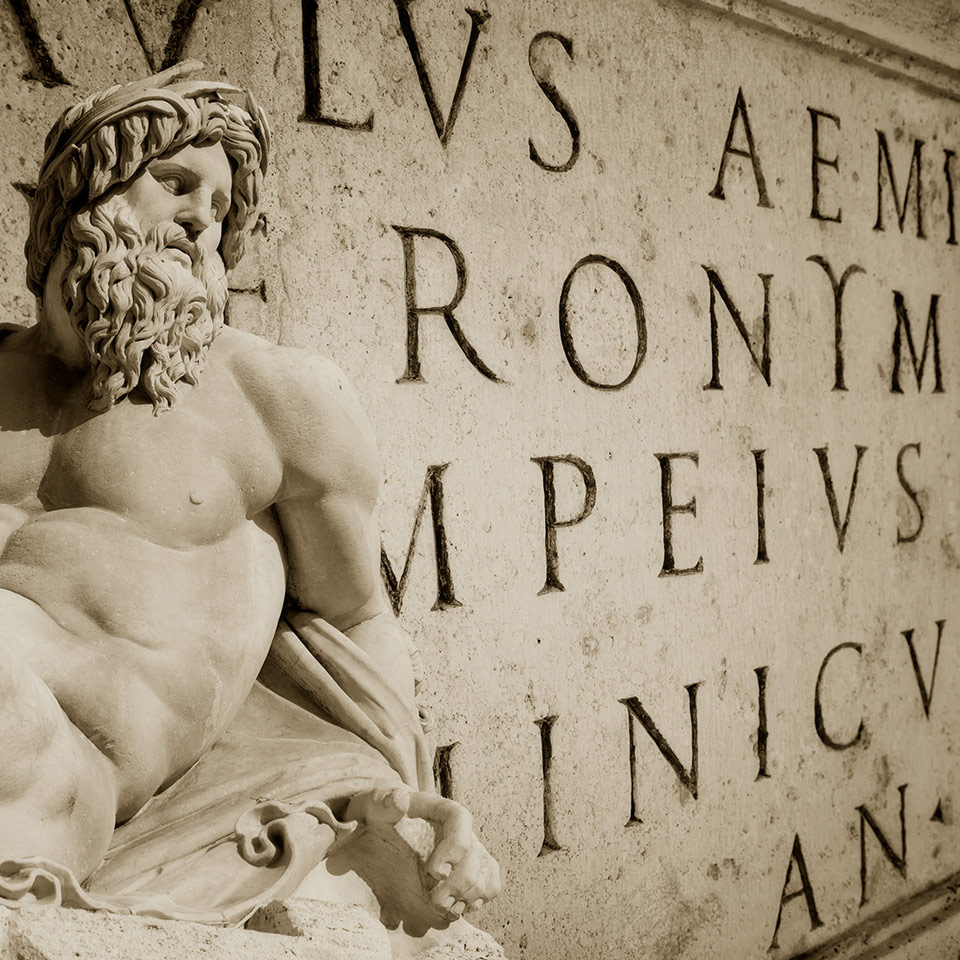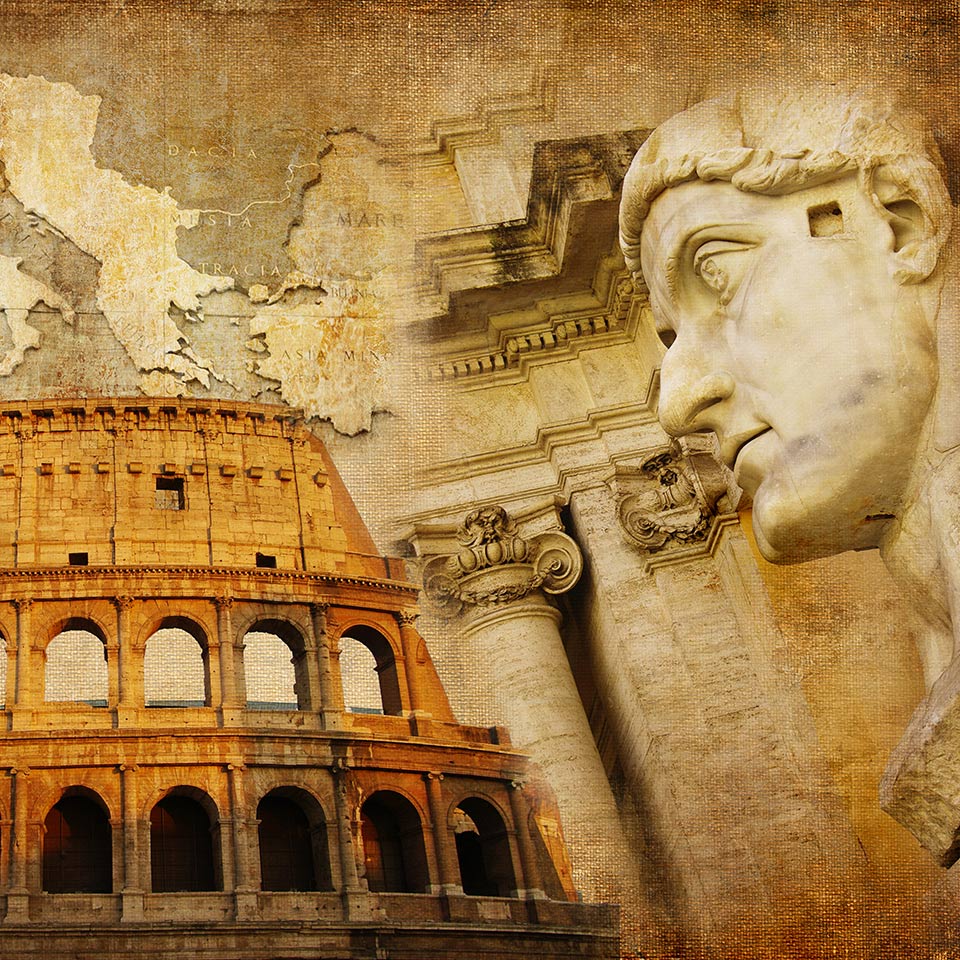According to legend, and long before the grandeur of the Roman Empire, there existed a time when Rome was but a humble city-state ruled by kings. These seven ancient rulers played a pivotal role in shaping the destiny of a civilisation that would one day conquer the known world….
Jump to:
Romulus (and Remus)
According to the most famous legend, the city of Rome was founded by twin brothers, Romulus and Remus. They were born to Rhea Silva, a Vestal Virgin and descendant of the famous Trojan hero, Aeneas. According to the story, they were conceived by the god Mars, infusing them with divine blood. However, both brothers were abandoned as infants and later taken in by a shepherd.
They both grew into natural leaders and their upbringing brought them to the site where Rome would eventually emerge as a major power. However, according to legend, Romulus and Remus argued over who had the right to found the new city. Both brothers fought, leading to the tragic death of Remus by the hand of his twin brother.
Romulus is credited with laying the foundations of Rome's government, military organisation, and the establishment of the Senate. His leadership set the stage for the development of a fledgling city into a regional power.
Recommended for you!
Best SellersNuma Pompilius
Numa Pompilius ascended to the throne around 715 BC, succeeding Romulus. Unlike his predecessor, Numa was known for his peaceful and scholarly disposition. He was a man of wisdom and virtue, and was deeply committed to establishing a stable and moral society in Rome, focusing on spirituality and religion.
He had a close association with the neighbouring Etruscans, who were known for their advanced civilisation and religious practices, and wanted to incorporate their wisdom into Roman society as well. Under his guidance, Rome began to embrace Etruscan religious ceremonies and divination practices. This cultural exchange was a pivotal time in Rome’s history, as this was the beginning of the development of Rome’s unique religious traditions.
Tullus Hostilius
Following the peaceful reign of Numa Pompilius, Rome saw the ascent of Tullus Hostilius: a warrior-king whose rule was marked by warfare and a vision of dominance! He reigned from approximately 673 to 641 BC and was relentless in his pursuit of military glory - a spirit that was not too dissimilar to Romulus.
Tullus Hostilius headed multiple aggressive military campaigns that were aimed at expanding Roman territory and influence. His most memorable action was the takeover of rival city, Alba Longa. However, the most significant military event was the conflict with the city of Veii. This resulted in Rome’s seizure of Veientine territory: a critical moment in the growth of Rome and its dominion over surrounding regions.
Even with this success, Tullus Hostilius was aware he needed to strengthen Rome’s military capabilities. He therefore organised the Roman army into distinct units and instituted regular military exercises and training. This laid the groundwork for the unstoppable military machine that Rome would become, leading to its dominance in the Mediterranean.

Ancus Marcius
Ancus Marcius inherited the throne with a vision that differed from his predecessors. During his reign, from about 642 to 617 BC, he brought a period of stability and expansion and focused on creating a more ordered and prosperous Roman society.
He recognised that, for a city to truly prosper, they needed more than just military power. This is why he invested in infrastructure. One of his most notable achievements was constructing the first bridge over the Tiber River - the Pons Sublicius. This bridge allowed people, goods and ideas to move more easily between regions and opened the doors for commerce and partnerships to grow, creating a blossoming economy.
He continued to strengthen Rome’s position and established friendly relations with neighbouring Latin tribes, encouraging trade agreements. He also secured a valuable resource for the city and captured the coastal salt pans, which were vital for preserving food at the time.
Tarquin the Elder
Tarquin Priscus (Tarquin the Elder) was the fifth king of Rome and ascended to the throne around 616 BC, following Ancus Marcius. Under his leadership, the city experienced significant growth. For example, as patron of the arts, Tarquin initiated grand building projects, one of the most famous being the Circus Maximus (the Roman chariot racing stadium). He also oversaw engineering projects like the Cloaca Maxima: a monumental drainage system that improved sanitation throughout the city.
As with any Roman ruler, Tarquin the Elder was also a skilled military strategist and statesman. He strengthened Rome’s governance by increasing the number of Roman senators and extended Roman citizenship to include Latin and Sabine allies. He left a lasting legacy for the continued evolution of Rome as a dominant force.

Servius Tullius
Servius Tullius became the sixth king of Rome around 578 BC, with his rule focused on social justice and political organisation. He initiated a comprehensive census of the Roman population, known as the “Servian Census”, which not only counted the citizens, but also categorised them into various classes based on their wealth and property ownership. This class system lasted for centuries and ultimately formed the basis of the Roman Republic’s taxation system and military service requirements.
He’s also credited with the construction of the Servian Wall, which was a defensive fortification surrounding the city. Portions of this wall still exist today in modern Rome!
Tarquin the Proud
Also known as Lucius Tarquinuis Superbus, Tarquin the Proud was the last of the seven Roman kings. His reign began around 534 BC and was marked by tyranny and power. He had a general disregard for the traditional republican ideals of Rome and ruled with an iron fist, brutally extracting money through heavy taxes and exploiting the labour of Rome’s own citizens by leveraging forced labour programmes.
One of the most famous incidents associated with Tarquin’s reign is the rape of Lucretia, a virtuous Roman woman. This horrendous act was committed by Tarquin’s own son, Sextus Tartquinuis, and sparked outrage in the city, leading to a rebellion against the King. Rome’s noble families turned against him and a coalition formed under the joint leadership of Lucius Junius Brutus and Lucius Tarquinius Collatinus. Together, they expelled Tarquin the Proud from the city. This marked the end of Tarquin’s rule and the birth of the Roman Republic that would last for centuries.
If you want to dive deeper into the epic rise of Rome's empire, we invite you to enrol in our Introduction to the Roman Empire diploma course. For only £37 (save £110!), you can study the many emperors who ruled at the height of Roman civilization - from Caligula to Nero - and learn about how Rome was founded, how it expanded its reach, and how it ultimately declined after centuries of power.













